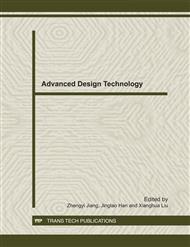p.107
p.110
p.114
p.118
p.123
p.129
p.136
p.140
p.147
Influence of Geometry in Nanometric Cutting Single-Crystal Copper via MD Simulation
Abstract:
A series of three-dimension molecular dynamics (MD) simulations are performed using hybrid potentials to investigate nanometric cutting process of single-crystal copper with diamond tool. The effect of tool geometry in nanometric cutting process is investigated. It is observed that with the negative rake angle, the volume of chips becomes smaller due to large hydrostatic pressure and plastic deformation generated in the subsurface layer. When the rake angle changes from -40° to 40°, the machined surface becomes smoother. Besides, the ratio of tangential force to normal force decreases with the increase of rake angle. In addition, the effect of clearance angle is analyzed and approximate entropy (APEN) is presented to denote the complexity and uncontrollability of the interactions between tool and workpiece with different clearance angles. With the decrease of clearance angle, the machined surface quality decreases with the local stress distribution in subsurface layer is uneven. An appropriate clearance angle not only keeps cutting force stable, but makes sure of the quality of machined surface as well.
Info:
Periodical:
Pages:
123-128
Citation:
Online since:
December 2011
Authors:
Price:
Сopyright:
© 2012 Trans Tech Publications Ltd. All Rights Reserved
Share:
Citation:


